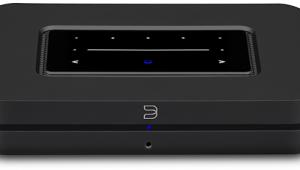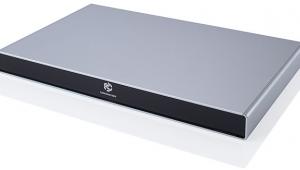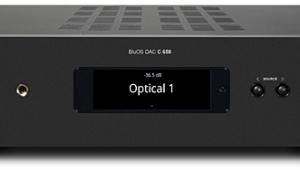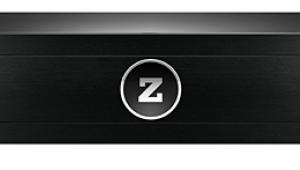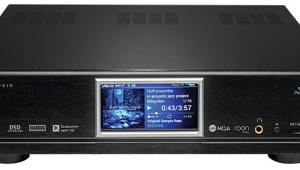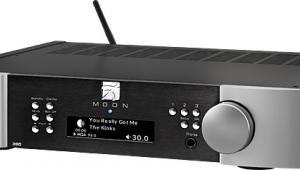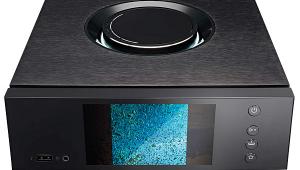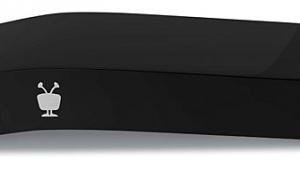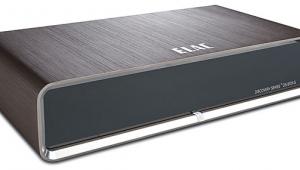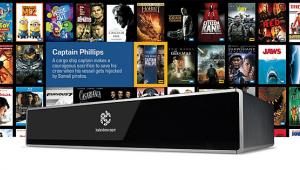Performance Personal Computers Dream 3D HTPC I
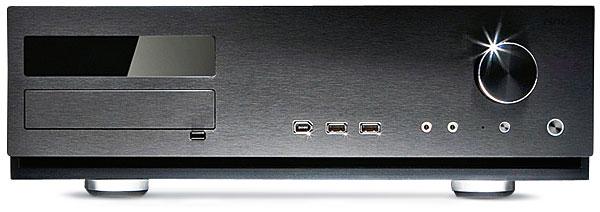
One of the many questions that keeps me up at night is why dedicated A/V media servers—the kind that sit cozily on a shelf above your AVR and pretend to be just another A/V source in your system—have traditionally been and continue to be so darn expensive. At the gleaming pinnacle of all that is good and glorious (and most expensive) in the media server world is the Kaleidescape movie system. Once you pull your head out of the “I could buy a new car with that kind of money” cloud and look down on the mountain of mere mortal media servers, you’ll see a small variety of makes and models with varying sphincter-constricting price points from companies such as Meridian, Olive, NuVo, and VidaBox. I reviewed Autonomic’s Mirage MMS-2 two-zone media server (Home Theater, October 2011), and I found lots to like about it—the iOS control apps, the integration of Internet streaming and cloud services, the two-zone outputs, and the all-around spiffy and ultra-easy way it provided access to my 300-plus-gigabyte library of digital media files—although none of that makes it any easier for most of us to sneak its $2,000 cost onto an already overburdened credit card.
For the average Joe with the average Joe’s paycheck, the less expensive (but often more labor-intensive and less reliable) way to access your digital media from your home theater involves storing your files on a hard drive, such as in an NAS device or a computer (with appropriate server software) that’s connected to your home network. You can then access those songs, movies, videos, and digital photos using one of a growing number of A/V components for which network media and Internet access are secondary features to the component’s primary function. Sony’s PlayStation 3 is an example of just such a device that’s been around for several years (a game machine that happens to be a 3D BD player/network media player/Internet services client/blah/blah/blah). But now there’s an avalanche of HDTVs, BD players, and set-top boxes with built-in or downloadable (for a fee, of course) apps that not only provide access to the media stored elsewhere on your home network but also open the door to a dizzying variety of Internet services (some of which, depending on your TV viewing habits, might allow you to save some bucks by getting rid of your cable or satellite service).
As the unstoppable high-speed tendrils of the digital kudzu vine that is the Interweb firmly establish themselves in our home theater systems, I wouldn’t be surprised to see Internet-enhanced vinyl LPs in the near future. It makes me wonder if it’s time to consider bypassing the mishmash of gear and apps in favor of incorporating a dedicated computer into my home theater. After all, an HTPC has the theoretical benefit of providing simple and easy access to all of my personal media, consolidated and stored locally right there in my rack of gear. Then there are the many added bonuses: full-blown, real-browser Internet access; big-screen computer gaming; and the somehow supremely satisfying act of editing Word documents on a 55-inch screen. (Although I know you’re thinking it, I’m not going to mention Internet porn.)
What the HTPC Do You Think You’re Doing?
To tell the truth, though, the thought of writing about putting a computer in a home theater has me feeling a bit like I’m about to wade naked through leech- and alligator-infested swamp water that’s just high enough for my crotch to skim the surface. First of all, I’m deeply scarred by years—think early Commodore 64 and on—filled with blue screens of death, fatal errors, irretrievably lost data, and overhyped/underperforming software and hardware. Frankly, I’ve always felt that relying on a PC to function as part of a home theater system was a lot like using a trained chimpanzee in the kitchen. Sure, some meals might go OK, but the potential for mayhem (not to mention the throwing of fecal matter) is high. Then there’s the often vitriolic PC-versus-Mac debate, which I won’t touch on here since I’ll be focusing specifically on my experience attempting to integrate a Windows HTPC from the folks at Performance Personal Computers into my home theater system.
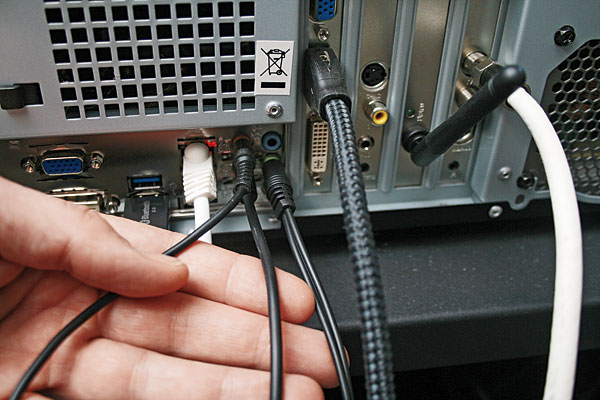
Unlike AVRs, Blu-ray Disc players, and HDTVs, there’s no set definition of what makes one computer an HTPC and another one something else. Since Performance Personal Computers makes several HTPC models—and provided one of its $1,249 Dream 3D HTPC I machines for me to test out—I asked Matthew Durante, Performance PC’s product manager, to give me some insight on what the company thinks are important elements that help define an HTPC. “An HTPC is engineered mainly for the entertainment aspect,” Durante told me. “Everything from the form factor to what size and style cooling fans are used is heavily influenced.” Whereas a gaming machine can typically do everything an HTPC can do, “you learn real quick that [gaming machines] are power hungry, usually requiring a bigger power supply, and of course, heat comes into play.” Heat-generating components with noisy fans are not home theater–friendly kinds of things. “For where your money goes,” he added, “there can be better choices” in hardware and form factor.
So, what should you look for in an HTPC? Not surprisingly, a key feature is Internet connectivity. “An HTPC has the ability to share media with other machines, as well as access media and/or other content within the network,” Durante said. And, of course, this’ll give you access to “things like Netflix, Vudu, and other Internet streaming services.” A Blu-ray drive that supports 3D playback and a video card that can support your screen size and format are musts. “Most people buy without thinking of these things,” Durante pointed out. “It’s important to know what your setup is going to be now and possibly in three to five years.” A TV tuner card lets you use an HTPC as a DVR for over-the-air DTV signals, as well as a replacement for some cable providers’ set-top boxes. As for the operating system: “Windows 7 64-bit. Settle for nothing less,” he said. And, once again, Durante stressed the importance of making sure your HTPC runs as quietly as possible.
I Have a Dream (3D HTPC I)
As you might guess, the Dream 3D HTPC I that Performance PC shipped my way met all those qualifiers and was loaded with an LG Super Multi Blue Blu-ray burner, a Nvidia GeForce GT 430 video card with 3D support and HDMI 1.4a connectivity, a Hauppauge WinTV-HVR-2250 dual-HD tuner card, and Windows 7 Home Premium 64-bit. As far as noise goes, the fans were slightly audible, but less so than with most other fan-cooled components I’ve come across—and I have the HTPC sitting in the open on top of my equipment rack. (Had I wanted to, the Dream 3D HTPC I’s 17.63-inch-wide-by-5.75-inchtall chassis would have slipped easily in the rack with all my other components.) In fact, the 1-terabyte Western Digital internal hard drive is often louder than the fans.
Now, I could argue the relative merits of one particular video card over another or quibble over the performance of any of the other parts you should use in an HTPC, but that’s not the point. The objective here is to see whether or not an average HTPC is something the average home theater owner should consider adding to his system. So, with a bit of trepidation, I connected the Dream 3D HTPC I’s HDMI output to an HDMI input on my Anthem AVM 50v surround processor and fired it all up.
Much to my surprise, the Dream 3D HTPC I, Anthem AVM 50v, and Samsung plasma HDTV hanging on the wall recognized one another immediately, shook hands like long-lost friends, and then acted as though there was nothing at all unusual about this electronic convergence ménage à trois. Instead of what I feared would be a painful afternoon of tweaking and troubleshooting, setting it all up was about as simple as telling the sound card to output audio over HDMI.
If all you’re looking for is a big-ass computer screen in your home theater, you’re pretty much done—and you pretty much don’t need an HTPC. Giant Web pages and spreadsheets are cool, but an HTPC ought to be more than just a convenient way to search for brain-cell-bursting YouTube videos from the couch. (In fact, if that’s your primary leisure-time activity, you can probably skip the HTPC altogether and get by with an app or two built into an HDTV or BD player.) I personally don’t consider opening and closing media players and photo programs to listen to music or view family photos—the same way as I’d do sitting at my desk with my laptop—to be enhanced in any meaningful way by using a 55-inch HDTV as a monitor.


